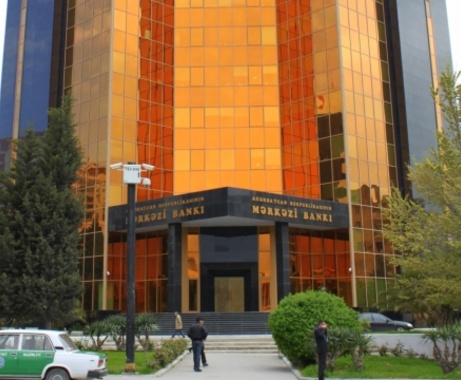Central bank directs $560 mln to keep stable manat rate

By Gulgiz Dadashova
The Central Bank of Azerbaijan (CBA) has announced that to prevent an excessive strengthening of the national currency manat and thereby neutralize the negative impact on the competitiveness of the non-oil sector, the CBA sterilized currency in the amount of $560 million in the first quarter of 2013.
CBA Chairman Elman Rustamov made the remarks on Wednesday, while voicing the bank's intention to further keep the stability of the national currency rate.
In 2012, the central bank sterilized currency in the amount of $1.584 million.
The stability of the national currency positively affects the stability of the macroeconomic and financial sectors.
While implementing the exchange rate policy, the CBA focuses on the inflation process and the maintenance of the country's competitiveness.
The CBA maintains a stable national currency rate through additional inflows into the foreign exchange market of the country.
Last year the manat rate strengthened against the U.S. dollar by 0.19 percent and decreased by 0.013 percent in the first quarter of this year. The lowest rate of the dollar was reported at the level of 0.7844 manats within three months -- from January 30 to April 4, while the highest rate amounted to 0.7850 manats on March 5-6.
Commission on acquisition of large banknotes will be kept
Meanwhile, the CBA reported that it will not cancel a commission fee of 0.3 percent that has been applied to commercial banks for each 100 manat banknote in cash since Feb. 1, 2013.
CBA Chairman Rustamov said on Wednesday that the introduction of commission with regard to such banknotes is not a temporary measure.
The banks, which are aware of the central bank's policy, believe that it would be reasonable to set a lower commission.
Earlier, around 90 percent of the banks bought cash with 100 manat banknotes from the CBA. But now they purchase banknotes of small denomination to avoid unnecessary spending.
The banks hoped that this commission would be called off, as there was common understanding of the situation during the consultations with the central bank.
The CBA initially planned to set a similar commission for 50 manat banknotes, but it was never set due to the opposing efforts of banks.
The central bank justifies the decision by the need to optimize the nominal structure of banknotes, reduce the use of cash in calculations and promote the use of non-cash payment systems.
Rustamov said this decision is considered to be effective.
"We see changes in the money supply, and continue to work in this direction. Whereas earlier 100 manat banknotes ousted other notes, now their market share decreased by increasing the proportion of smaller denomination banknotes," he said.
This, he said, contributes to simplification of the cash flow and eases the use of certain services by the public.
According to the CBA data, the share of 100 manat banknotes in circulation has reached 75 percent in the past seven years, exceeding the internationally accepted standards.
Experts believe tax incentives are the most effective measure in the international practice to increase the volume of cashless payments.
The share of cash payments in the turnover makes up only 4-5 percent in Western countries, while in Azerbaijan the figure amounts to 50-60 percent.
In international practice, in many countries, a number of cash-related processes have been passed by central banks to the private sector, and related services are provided to commercial banks for a fee. However, the central bank of Azerbaijan does not charge any fee for cash-related services.
Azerbaijan had announced the currency denomination and switched to new banknotes in 2007. This allowed prevention of difficulties that could have arisen among trade and economic entities in connection with the circulation of banknotes of 19 denominations.
The total volume of the order of new currency was 1.7 billion manats given the stock for three years. 94 percent of the total amount accounted for banknotes (worth 1, 5, 10, 20, 50 and 100 manats) and the remaining 6 percent was made up by metal coins (1, 3, 5, 10, 20 and 50 Gapiks, or one-hundredth fractions of 1 manat).
The operating period of banknotes is up to five years and that of coins 20 years.
Today, a considerable burden falls on the banknotes worth one and five manats. Their life cycle is up to two years as they are damaged due to frequent use. Therefore, the CBA is considering the possibility of issuing metal coins of high denomination to alleviate the burden and reduce the costs.
Here we are to serve you with news right now. It does not cost much, but worth your attention.
Choose to support open, independent, quality journalism and subscribe on a monthly basis.
By subscribing to our online newspaper, you can have full digital access to all news, analysis, and much more.
You can also follow AzerNEWS on Twitter @AzerNewsAz or Facebook @AzerNewsNewspaper
Thank you!
